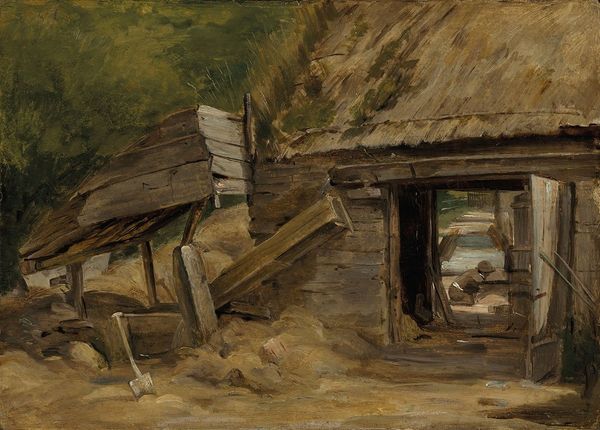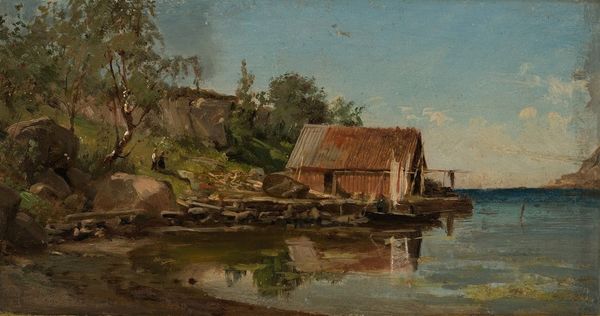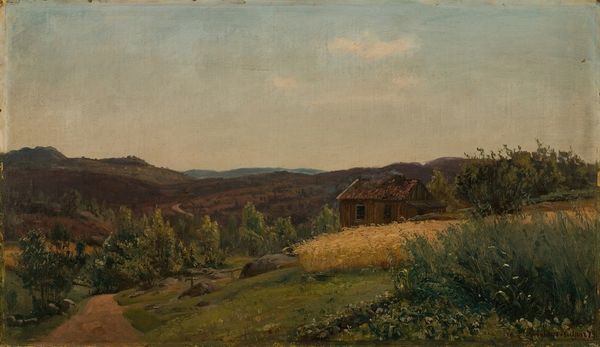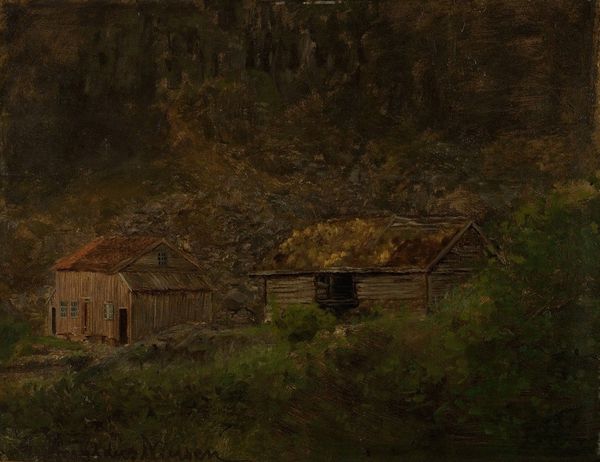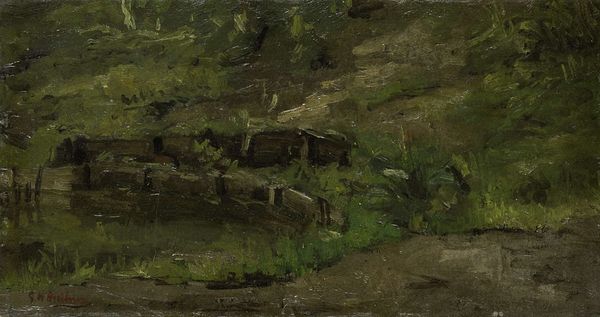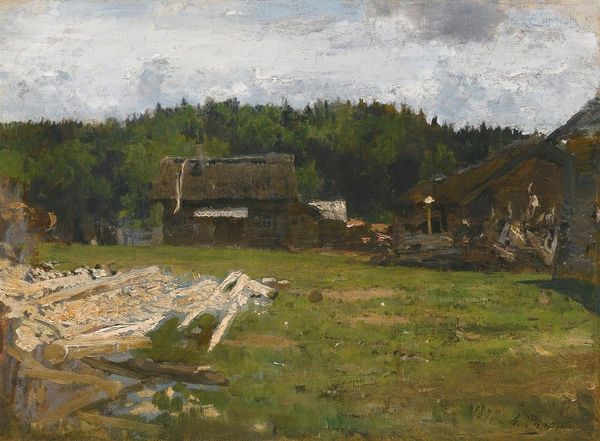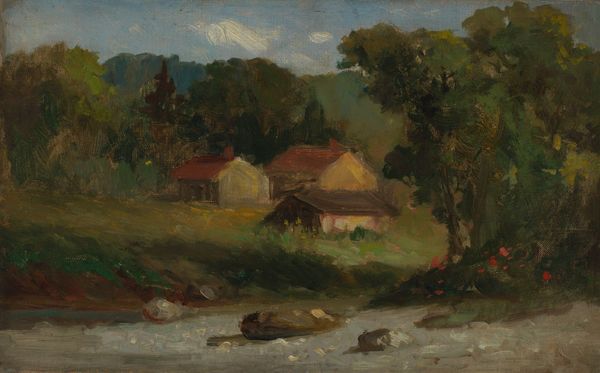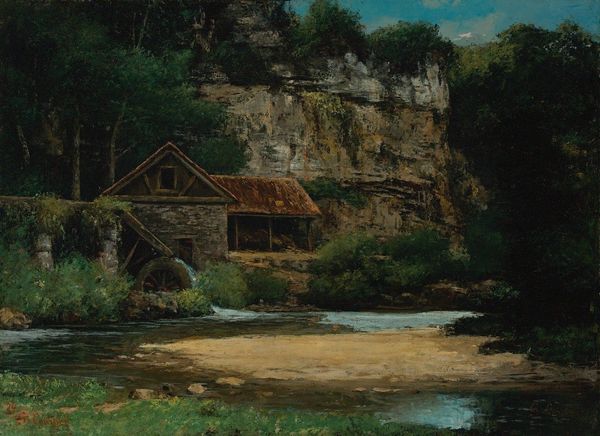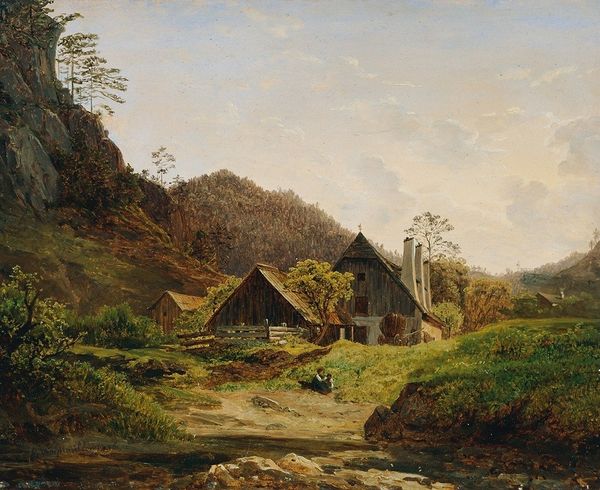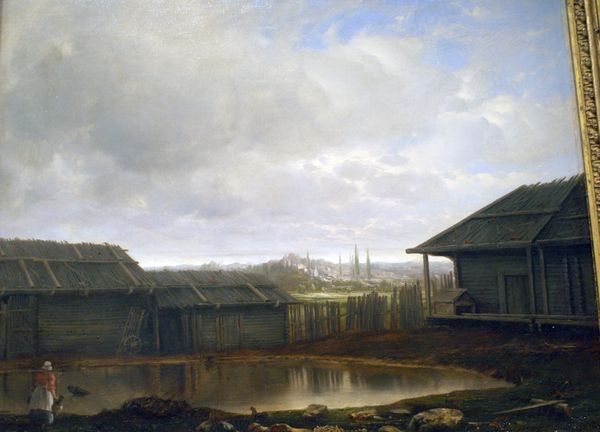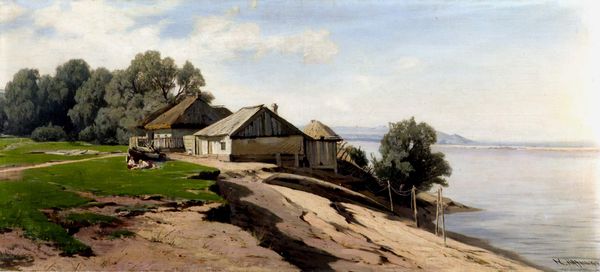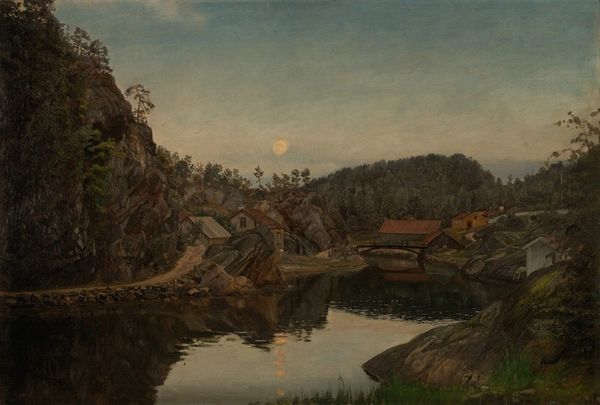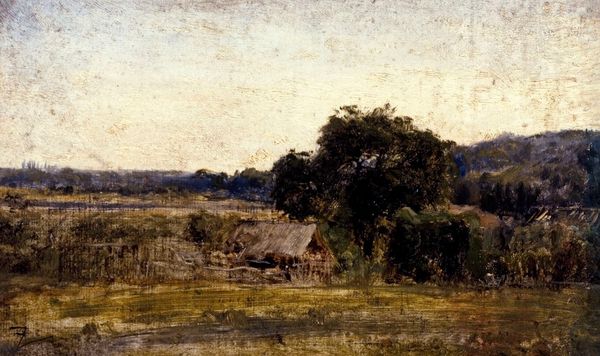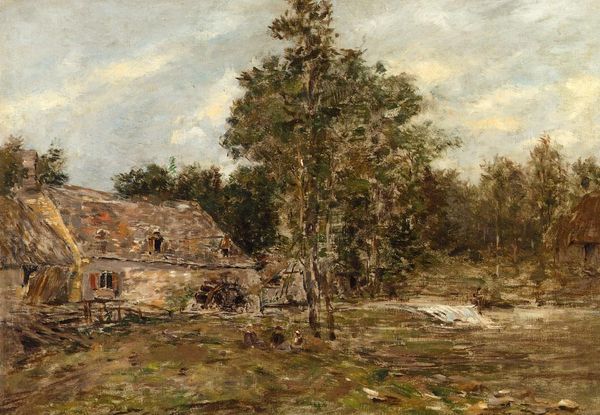
Copyright: Public Domain: Artvee
Curator: Before us is Amaldus Nielsen’s oil painting, "Hitterøe," created in 1860. What strikes you initially about this landscape? Editor: The immediate impression is one of starkness. The ruggedness of the rocks dominates, casting a rather subdued mood over the entire scene. There’s a distinct emphasis on raw, natural elements. Curator: Indeed. Let's delve into that. The painting presents a fascinating interplay between the textures and the structures. Note how Nielsen has rendered the surfaces; the rough, fractured faces of the boulders in the foreground juxtapose with the smooth surface of the water. Also, consider how he employs the oil paint, a rather direct material exploration. Editor: Exactly. Looking closely, you can practically feel the weight of the materials. The artist hasn't shied away from showing the physicality of labor. There is clear impasto, but it does not serve expressionism. What does it communicate to you? Is the artist portraying industrial extraction? Was there some sort of activity here? Curator: Possibly, but within a carefully structured composition. The artist has framed the shed or small building with strong horizontals—emphasized by the shoreline, creating layers of visual interest. Then, vertically, the jagged mountain lines on the left find a counterpoint on the foreground in the rocks. Editor: These deliberate geometric lines give shape to the otherwise organic materials. So, even as we feel the unyielding essence of stone and wood, there is clear artifice to their rendering. Curator: Precisely. It also serves to flatten space, emphasizing the artwork's two-dimensionality. It almost veers towards abstraction with these juxtapositions of rough texture and planar division. What is fascinating is the use of such crude building blocks in rendering his message. Editor: And in using impasto, he transforms the very materiality of the painting. His use of paint transforms our perceptions of nature into tactile impressions that emphasize material realities and physical interventions. Curator: Well, in closing, perhaps what lingers most is the painting's compelling structure. Its stark yet harmonious organization offers endless interpretations and makes the composition unforgettable. Editor: For me, it’s that blunt depiction. This is a work where we can feel the artist pushing the materials to test what could be shown. What results is a portrait of process, nature, and the intersection of those planes.
Comments
No comments
Be the first to comment and join the conversation on the ultimate creative platform.
